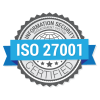Procurement has been at the heart of a company’s success since the Egyptians in 3000 BC. However, the complex nature of managing procurement means it is not without challenges.
Business procurement departments have a variety of different responsibilities. Managing procurement involves everything from contracts to supplier relationships. It means it is a dynamic role that has to adapt to new challenges.
Over the past year, companies have had to find even more value from disruption and uncertainty. However, advances in digital technologies have helped speed up procurement transformation. Procurement technologies are becoming more essential than ever to manage procurement challenges and unlock digital procurement opportunities.
Read on to learn seven common procurement challenges and how to maximize digital procurement processes to boost business performance.
1. Stakeholder Engagement
Cost savings are a significant challenge if procurement is not seen as integral to the overall company strategic objectives. Or if teams view procurement as too bureaucratic, or without value there can be issues.
Stakeholder engagement ensures you achieve your goals fast. It makes it easier to source and gain customer satisfaction. Inaccurate spend management data and information can lead to disengagement or dissatisfaction.
Solution
Managing procurement challenges such as this requires you to engage stakeholders. The sooner procurement connects with business and client teams, the more visible value it can add.
In a Deloitte Tech survey, 59% of chief procurement officers (CPOs) identified the importance of digital procurement tools for internal stakeholders and suppliers.
Procurement technology tools increase data accuracy in a comprehensive way. So, stakeholders will be able to engage, trust, and understand the value of processes.
2) Control of Processes
If stakeholder engagement is poor, the procurement team can lose visibility of processes. You do not want to end up as an order processor without the opportunity to negotiate or find solutions.
Procurement needs to be at the forefront of contract and procurement management. Then they can identify where to add value and identify inefficient spending.
Without control or visibility of processes, risk management can also become an issue. Single source and low value spend suppliers can become high risks fast. If procurement is not overseeing processes, threats such as this can escalate.
Solution
Engage stakeholders and use a contract intelligence and procurement platform. You will have visibility of all suppliers and processes to gain control once more. You can then analyze all processes, making them more efficient, transparent, and connected.
3) Structural Issues
Ideally, the CPO will sit on the board alongside other functions such as Human Resources. This raises the profile of procurement. It becomes an equal partner rather than being subservient to different functions.
Procurement should at least report to one of the board members directly, such as finance. If procurement is diluted further down the organization, its influence and value diminish.
Solution
Procurement transformation needs technology to master negotiations and evidence cost-optimization. Over half of companies are scaling advanced analytics and visualization.
Enterprise spend visualization and spend intelligence analytics help evidence the integral role of procurement for a company. It also helps oversee processes even if structural issues remain for some time. Data and sourcing become more efficient too, which helps gain traction in companies.
4) Company Governance
There are different legal requirements by country. But good practice is to approve all purchasers. Finance, stakeholder and procurement can approve them under a pre-defined financial level.
If this arrangement is not in place, it can lead to inconsistencies. There is a danger of stakeholders railroading deals. Which might not support the best interests of the company.
Governance also reduces the risk of other invisible spending issues. It can help curb and address organizational spending through an always on approach to spend auditing.
Solution
Effective governance relates to compliance, strategy, monitoring performance, and visible infrastructure. When processes are transparent, there is a better grip on company governance. As McKinsey predicts, digital technologies will help generate value and connection for companies as a whole.
5) Type of Alignment
Business procurement issues can relate to how teams align. The category model allows teams to specialize with certain suppliers and markets.
Organizational alignment gives a broad oversight. However, there is a risk of inaccuracy and simplicity.
Solution
One solution is to adopt a hybrid model of alignment to improve procurement function. Adopting digital technologies allows for ease of transition to this hybrid style.
You will be able to identify what suppliers need contract and procurement management. You also can simplify processes and identify where repetition of tasks occurs.
6) Business Level Discussions
A challenge for the CPO is to ensure the procurement team has a holistic approach to processes, such as:
- Whole life costs
- Identifying long term risks
- Persuading the business of the value their suggestions bring
Investment is often needed to ensure the team can engage with other areas of business. And training is necessary to learn how to debate the pros and cons of each procurement strategy.
Solution
Spend analysis software makes it easier than ever for employees to present accurate data. Confidence in processes and strategy outcomes helps connect employees to other business departments. Platforms also show long-term risks and solutions, so that employees can quickly identify what action to take.
7) Procurement Leadership
For procurement transformation, there have to be willing participants. You need to find, develop, and retain people with a comprehensive set of skills. Essential skills for a procurement department include:
- Negotiation skills
- Analytic skills
- Relationship management
- Strategic thinking
- Time management
Common procurement problems include finding the right leadership for roles. Your department has to appeal to talented individuals. They need to be willing to invest in your company. You need to stand out from the crowd.
Solution
What does your procurement team offer? A team open to procurement transformation and technologies will attract the right employees. Digital technologies also make it easier to train staff in all areas of procurement.
Manage Common Procurement Challenges
Invest in a contract intelligence, spend analytics and procurement management systems. This will help manage common procurement challenges.
Look no further than Thinking Machine. With contract intelligence, spend visibility, cost optimization, digital procurement analytics, Thinking Machines supports all areas of procurement transformation and supplier relationship management.


